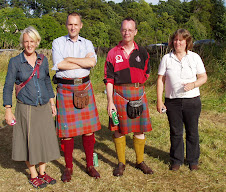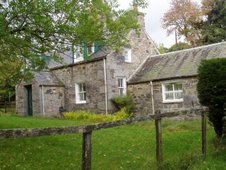Another good day, yesterday. The Neap Tide shawl was just
what I needed – the difference between knitting to pick up when I happened to
have a chance to sit down; and knitting to contrive opportunities to get back
to.
I calculated, very roughly, how many more stitches I needed
to achieve the width specified in the pattern, given my gauge and given its,
and I decided that two additional pattern repeats in the first Increase Section
would about do it, 14 extra stitches. Obviously, two more repeats add length as well as width.
I have done that, and have now advanced to the second Increase Section, where
the increases don’t come as fast.
Towards the end of this section, I should be able to get a better idea how
things are going. I can add more repeats in the Centre section to increase the length, if need be. And if I decide that more width is needed, I can incorporate more stitches
into the latter parts of the second Increase Section, without increasing length and at some damage to the
slope of the curve.
It’s a super pattern. The yarn is wonderful too.
I often marvel at smart newspaper columnists who say that
later life never involves any mathematics, so why learn all that stuff? This particular problem was pretty elementary
– I figured that I needed 25% more stitches than I had, and two pattern
repeats, with increases on every pattern row, seemed to do the trick.
(And, knitting aside, what about the question, which often
arises these days, of what a 1.5% tax free interest rate is worth to a basic
rate? a higher rate? tax payer. That one involves elementary algebra. I can do
it if I apply myself, and would feel a bit uncomfortable, I think, if I
couldn’t.)



Or increasing or decreasing recipe amounts? Knitting has much more math than is natural for me, that's for sure. Thanks for the kind words.
ReplyDeleteI think those columnists have never bothered to figure out which of two items in the food store is more expensive per ounce. I use math every time I go shopping.
ReplyDeleteGlad I rediscovered your posts....bloody blogger has been acting up.
ReplyDeleteThere are people who never use math? That's crazy talk!
ReplyDeleteI use algebra on a fairly regular basis, as well as geometry (okay, mostly a^2+b^2=c^2 and other triangle stuff for shawls, but still) and the occasional bit of trig.
Math is invaluable. If, as an adult, you choose to avoid it, well, that's your choice, and might not be a bad one if you have dyscalculia, but even then, I've known several people with that who stank at basic arithmetic, but had FRIGHTENING calculus skill.
To me, math is as basic a skill as reading. OK, you may never write another proof after geometry, but you've learned how to think in a way that's so valuable they make docs take an entire year of college physics to learn how to do it well.
Yeah, algebra may not come up much, but neither does most of what I learned in advanced English except for letting me laugh at bad jokes about modest proposals and making Irish stew out of babies. Plus, the vast majority of jobs involve some math, and just because a few smart columnists with a hardon for math avoidance managed to structure their lives to avoid it doesn't mean everyone can (or should).
Plus, the only number any of us should fear is 7, because as we all know, 7 ate 9! ;)
DeleteI think those smar tnewspaper columnists were just bad at math, and now they want to emphathize that what they are doing is so much more important than what all the "math people" (engineers, scientists, bankers etc)are doing.
ReplyDeleteI have to disagree re the usefulness of Maths. Arithmetic comes up all the time, especially now that I am working a till in my volunteer job at a National Trust property. And a little basic geometry when doing DIY or sewing. But my Maths ground to a halt at simultaneous equations, and I can honestly say I have never missed them.
ReplyDeleteI must have learned all the Maths I was going to use by thirteen - estimates,averages, percentages, triangles - that sort of thing.